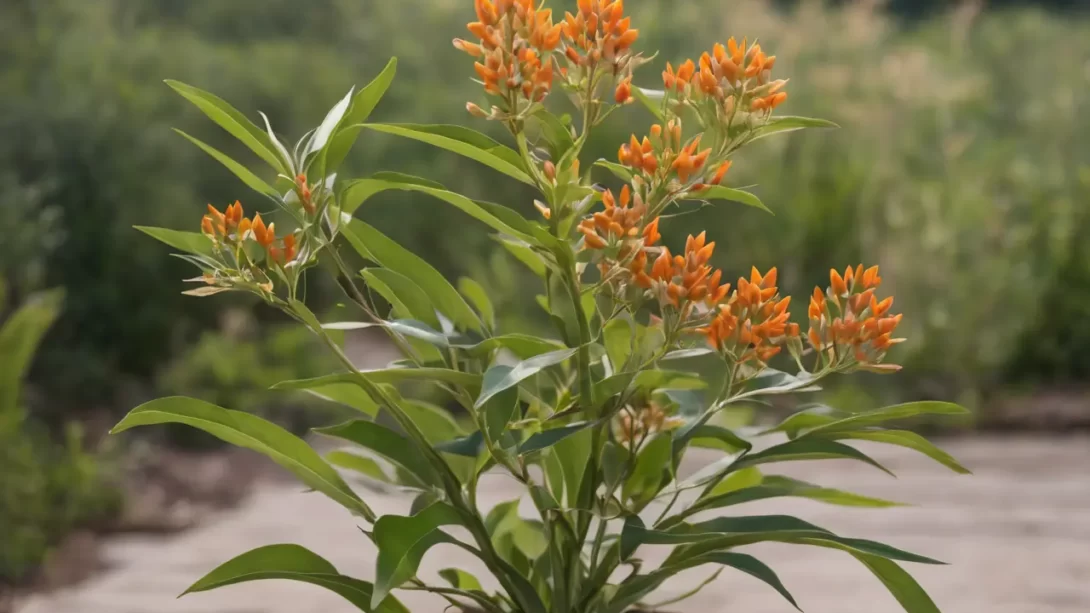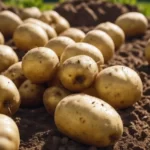Milkweed, a plant revered for its vital role in the life cycle of monarch butterflies, is not just a staple of sprawling gardens or wild meadows. Its versatility allows it to thrive even in more confined spaces, like pots and containers. This adaptability makes it an excellent choice for urban gardeners or those with limited outdoor space. Growing milkweed in pots not only brings the beauty of nature closer to your home but also contributes significantly to the conservation of monarch butterflies, a species facing numerous environmental challenges.
Choosing the Right Milkweed Species
When deciding to grow milkweed in pots, selecting the appropriate species is crucial. There are over 100 species of Asclepias (the scientific genus for milkweed), with some being more suited to container gardening than others. For instance, Asclepias tuberosa, known as butterfly weed, is a compact species ideal for pots. It’s vital to choose a species that naturally thrives in your region to support local monarch populations. Researching native milkweeds or consulting with a local nursery can guide you in making the best choice for your area’s climate and the specific needs of your local butterfly populations.
Selecting the Ideal Container
The choice of container is a key factor in the successful cultivation of milkweed in pots. A pot that is too small can restrict root growth, while one that is too large may lead to waterlogging. Generally, a pot with a diameter of 12-16 inches is suitable for most milkweed species. The material of the pot also matters; terracotta or breathable fabric pots are excellent for ensuring good air flow to the roots. Most importantly, ensure that the pot has adequate drainage holes to prevent water accumulation, which could lead to root rot, a common issue in poorly drained containers.
Soil and Planting
Milkweed thrives in well-draining soil that can retain some moisture without becoming waterlogged. A mix of potting soil and sand, in a 3:1 ratio, works well to provide the necessary drainage and nutrient balance. When planting milkweed, you can start with seeds or young plants. If using seeds, it’s often beneficial to cold stratify them by keeping them in a refrigerator for several weeks to simulate winter conditions, enhancing germination rates. Plant the seeds or young plants at the same depth they were growing previously, ensuring the crown of the plant is just above the soil surface. After planting, water the soil thoroughly to settle it around the roots or seeds.
Sunlight and Watering Requirements
Milkweed plants require full sun to thrive and produce vibrant blooms. Position your pot in a location where it will receive at least six hours of direct sunlight daily. When it comes to watering, the key is to maintain a balance – the soil should be kept moist, but not overly wet. Water the plant deeply when the top inch of the soil feels dry to the touch. In hotter, dryer climates, this may mean watering more frequently, while in cooler, more humid areas, less frequent watering is required. Always check the soil moisture level before watering to avoid over-saturation.
Fertilizing and Pruning
While milkweed is not particularly demanding in terms of feeding, a light application of a balanced, slow-release fertilizer in the early spring can promote healthy growth and flowering. Be cautious not to over-fertilize, as this can lead to more foliage at the expense of flowers. Pruning is equally important for maintaining a bushy, well-shaped plant. Pinch back the tips of young milkweed plants to encourage branching, and remove any dead or yellowing leaves to keep the plant healthy. Regular pruning also stimulates new growth, potentially leading to more flowers and, in turn, more visiting monarch butterflies.
Pest and Disease Management
Milkweed is relatively hardy, but it’s still susceptible to certain pests and diseases. Aphids, particularly the oleander aphid, are common pests that may be found in clusters on stems and leaves. Gently spraying the plant with water or using insecticidal soap can effectively manage these pests. Additionally, milkweed can be affected by fungal diseases like powdery mildew, especially in humid conditions. Ensuring good air circulation around the plant and avoiding overhead watering can help prevent such diseases. If a fungal problem arises, applying a fungicide according to label instructions can be beneficial.
Overwintering Milkweed in Pots
In colder climates, overwintering milkweed becomes necessary. As the plant dies back in the fall, reduce watering and allow it to go dormant. Once the foliage has died back, you can trim it to just above the soil line. If your region experiences freezing temperatures, consider moving the pot to a sheltered location, like a garage or shed, to protect the roots from freezing. Alternatively, you can add a layer of mulch or straw to the pot’s surface for extra insulation. For regions with mild winters, leaving the pot outdoors but in a protected area, such as against a south-facing wall, might be sufficient.
Conclusion
Growing milkweed in pots is a rewarding endeavor that contributes to the conservation of monarch butterflies and enhances the beauty of your garden space. By selecting the right species, providing appropriate care, and managing any pest or disease issues, you can create a thriving milkweed habitat right on your patio or balcony. As these majestic butterflies visit your milkweed plants, you’ll have the satisfaction of knowing you’re playing a part in supporting their lifecycle and the broader ecosystem. So, why not start your milkweed potting journey today and witness the wonders of nature unfold right before your eyes?



